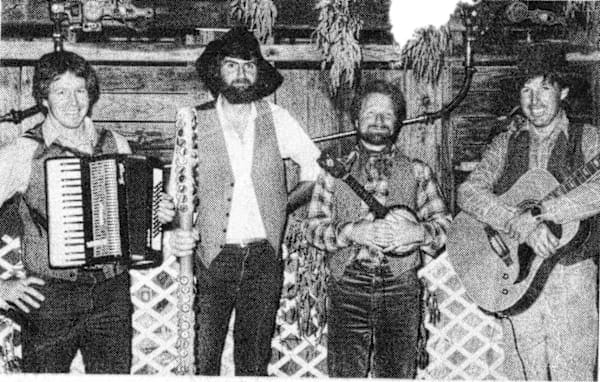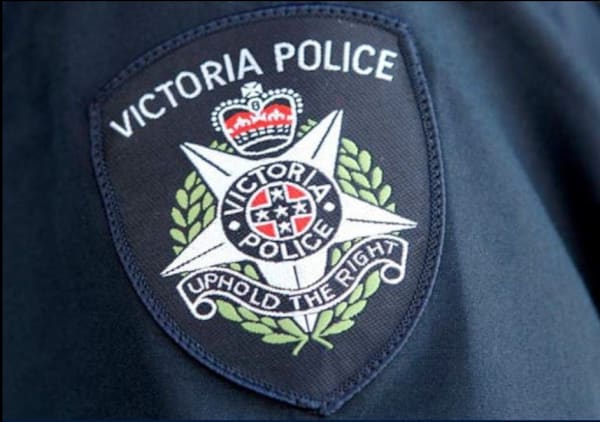MANSFIELD’S Up2Us Landcare in partnership with the Department of Energy, Environment and Climate Action’s (DEECA’s) Statewide Invasive Species Program has launched a new community feral pig program, one of three regions in the state to trial a collaborative approach to management and control of this destructive pest.
Feral pigs are found at several locations throughout Victoria, with more established populations found along the Murray River, far south-west Victoria, the Otway's, East Gippsland, and parts of central-west and north-east Victoria.
Although populations are mostly isolated and occur at relatively low densities, new populations continue to emerge as conditions change and it is these groups of feral pigs that the program is focusing on.
The goal is to combat the expansion of feral pigs from established areas, targeting regions like the Mansfield Shire - at the periphery of the pigs’ range - to mitigate the impact of these invasive pests before populations become more entrenched.
In recent years, feral pig numbers have increased across the shire, with reports sighting them from Bonnie Boon to Merrijig, Tolmie and Mt Samaria.
Latest Stories
Rhiannon Quigley project officer at Up2Us Landcare believes many people would be surprised there are feral pigs in the region, and that their presence is not isolated to a few far-off pockets, with sightings on private land across the district.
“Mansfield Shire already has several species impacting private land, such as wombats, kangaroos, and deer, damaging infrastructure and grazing pasture, pigs are further compounding these issues,” she said.
“Up2Us aim to assist landholders to reduce the threat of pigs on their property, and with current funding and support through DEECA we can start doing just that.”
The program looks to test and refine management strategies over three specific regions with local success paving the way for effective methods and tools to be implemented more widely.
DEECA’s Community Vertebrate Pest Management Coordinator Mick Freeman conducted the information session in Mansfield on August 13, speaking to a handful of landholders about the issue and what support and strategies are available to best manage feral pigs in the shire.
Mick Freeman has been in wild dog management since 2016, however with the increasing incursion of feral pigs into new regions across Victoria, he is now spearheading the pilot, with landholders in Barunduda, Wooragee and the Indigo Valley also taking part in the program.
Mr Freeman recounted how there were areas he used to visit for wild dog management where you rarely heard mention of feral pigs.
This has changed.
According to Mr Freeman over the years, sightings increased from intermittent to more regular, with more recently reports of non-farm incursions for the first time.
Regions that might once have considered feral pigs as a relatively isolated inconvenience are now contending with a serious problem.
Looking to tackle a developing concern in Mansfield, representatives from Agriculture Victoria and Parks Victoria attended the hour and a half information session, with the program delivered through AgVic biosecurity funding and informed by invasive species experts and senior veterinarians associated with the government department.
The pilot prioritises forming collaborative partnerships not just with invested government departments, but with local Landcare groups and the farming community, providing education and support in best practice for pig management and disease monitoring to landholders.
This includes taking samples for research to monitor potential disease outbreaks, providing valuable data even in the absence of active infections.
Data gathering is an essential aspect of the program, with landholders urged to report pig sightings and damage, along with control measures and numbers culled, with data-sharing platforms like Feralscan used to aid efforts.
Effective reporting helps secure strategic funding and provide critical information to manage the issue.
Trapping is considered one of the more effective means of control, however Mr Freeman recommended integrating various methods, including baiting to tackle the problem comprehensively.
The program provides the use of traps like the Pig Brig Trap System, which Mr Freeman confirmed was easy to set up and delivered impressive results, capturing whole mobs.
Training and other resources are also offered to ensure the effective use of these tools, with future meetings focusing on best practices, tool availability and employing a coordinated effort to pig control.
As the program evolves, feedback from landholders will also be incorporated to refine approaches and potentially explore additional methods of control.
The evening information session in Mansfield generated some of this input, with landholders keen to share strategies that had worked for them in the past fashioning traps with resources on-hand proving successful.
By encouraging this proactive and collaborative approach, the program aims to manage an escalating pest problem and counter the impact of feral pigs on local agriculture and natural environments.
The program represents part of a bigger Victoria government push to combat this invasive pest, with efforts intensified to control feral pigs across the state.
In a recent round of state government funding, two of 38 projects aimed at providing ground-breaking solutions and use emerging technologies to improve livestock biosecurity, were awarded to research relating to feral pigs.
The Livestock Biosecurity Funds Grant Program was established collaboratively between Agriculture Victoria and four Livestock Compensation Advisory Committees (Cattle, Sheep and Goats, Swine and Bees), representing a shared responsibility between government and industry to boost Victoria’s biosecurity and provide real benefits to industry.
“The Livestock Biosecurity Funds Grant Program helps industry meet emerging challenges at a time when biosecurity risks and threats are constant and allows us to be more proactive as we protect our state from pests and diseases,” said Ros Spence, Minister for Agriculture.
To protect the commercial pork industry, Western Plains Pork was awarded $155,000 to run a pilot program to map contact between feral and domestic pigs to understand disease transmission risks.
This program will enhance participation and engagement from land managers – improving the industry’s preparedness and reduce the impact of diseases on the Victorian pig industry.
The other initiative driven by DEECA's Arthur Rylah Institute aims to quantify the potential risk of EAD transmission between farmed livestock and feral pigs by quantifying areas in Victoria where feral pigs could pose a significant reservoir for EADs.
This will build on and complement the program conducted by Western Plains Pork.
The study will also explore cost-effective strategies for managing feral pigs in the event of an outbreak.
With feral pig populations expanding into new regions across Victoria, a more coordinated effort in pig control and a structured statewide response is essential to mitigating risk and minimising impact.
For further more information or to become part of the program contact Mick Freeman (DEECA Statewide Invasive Species) – 0477 358 061, michael.freeman@deeca.vic.gov.au















